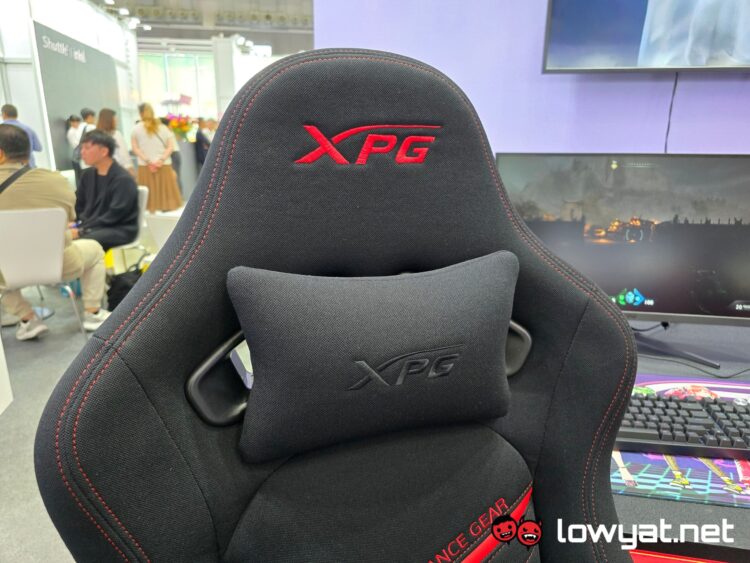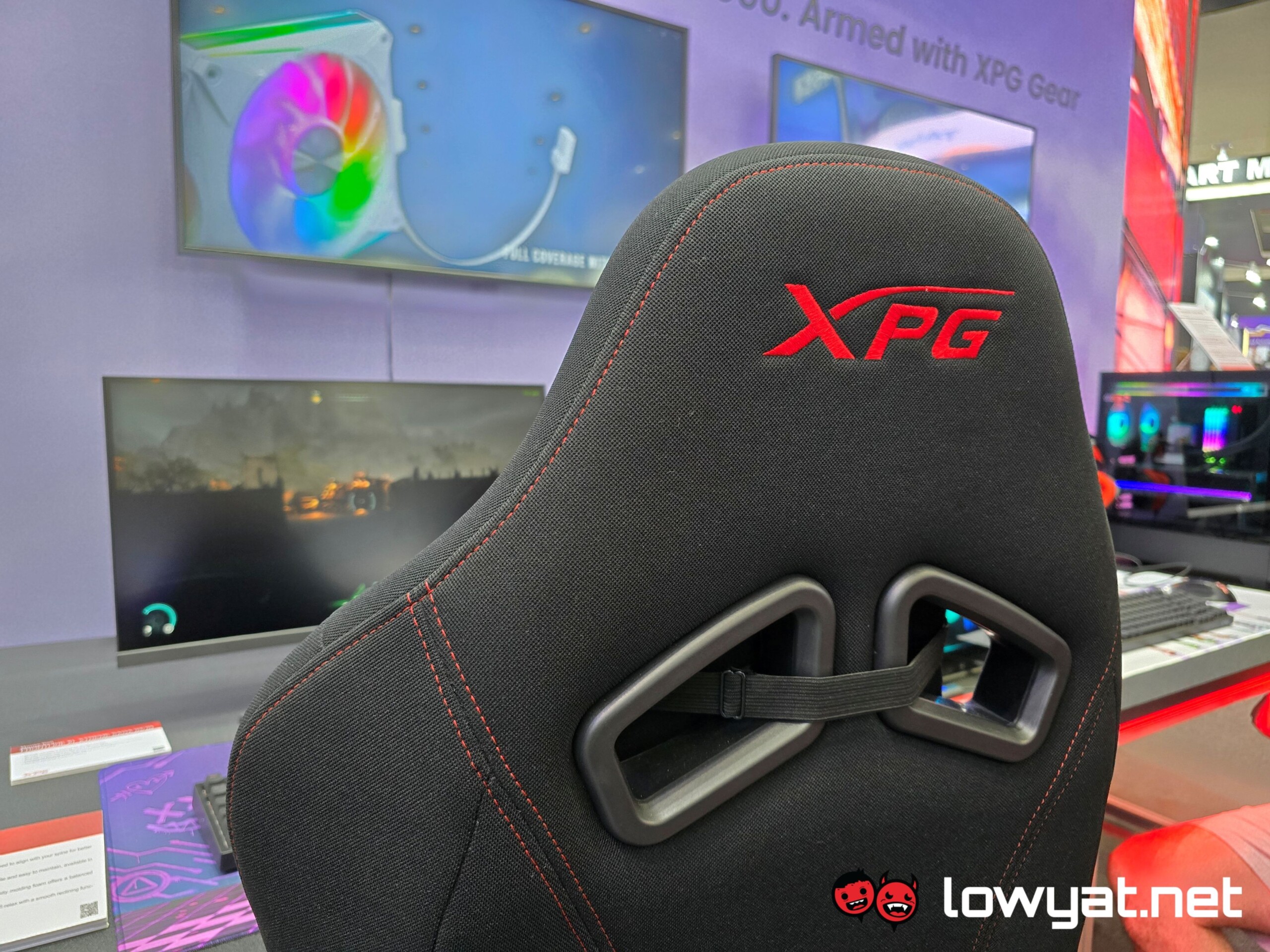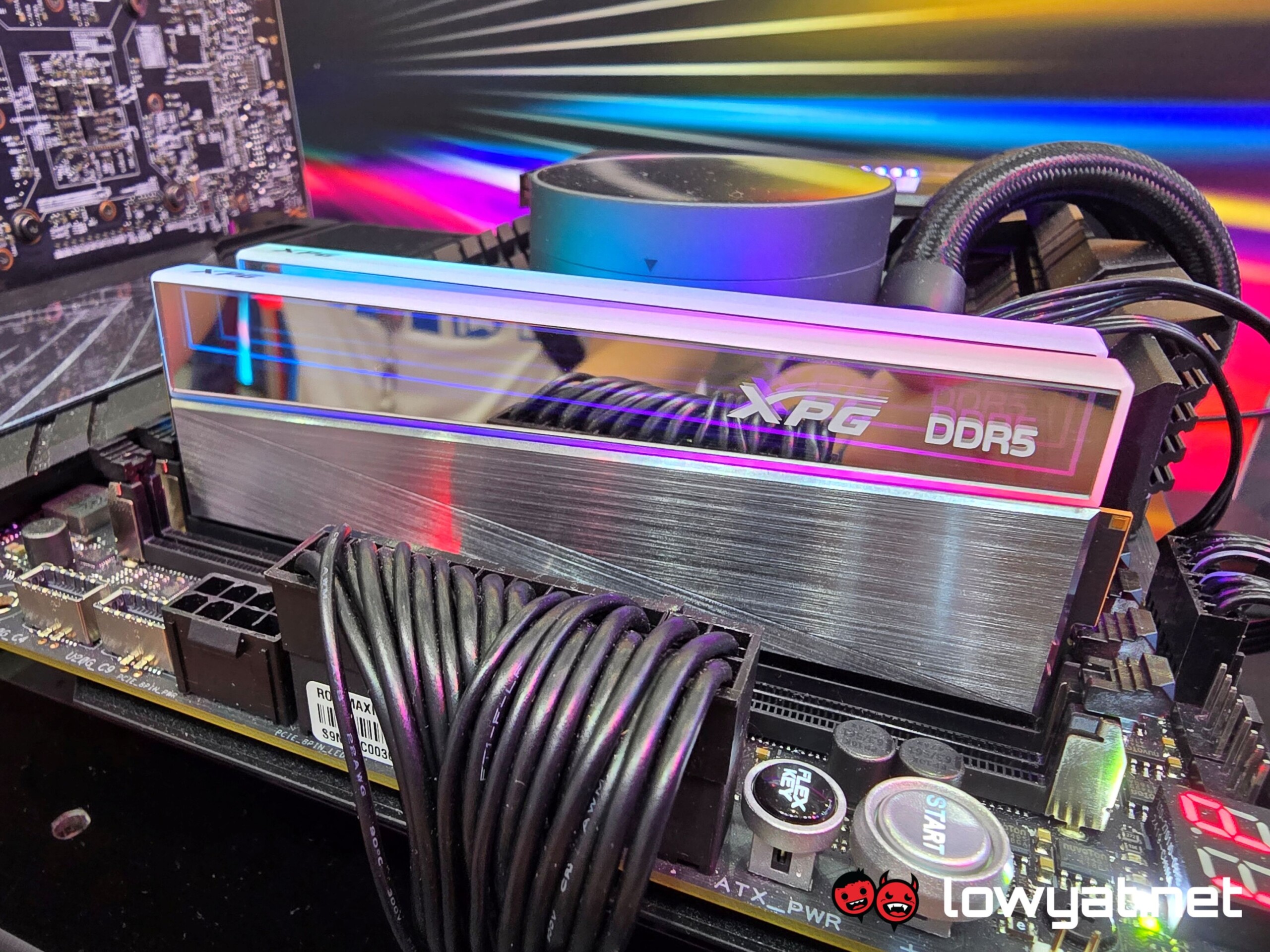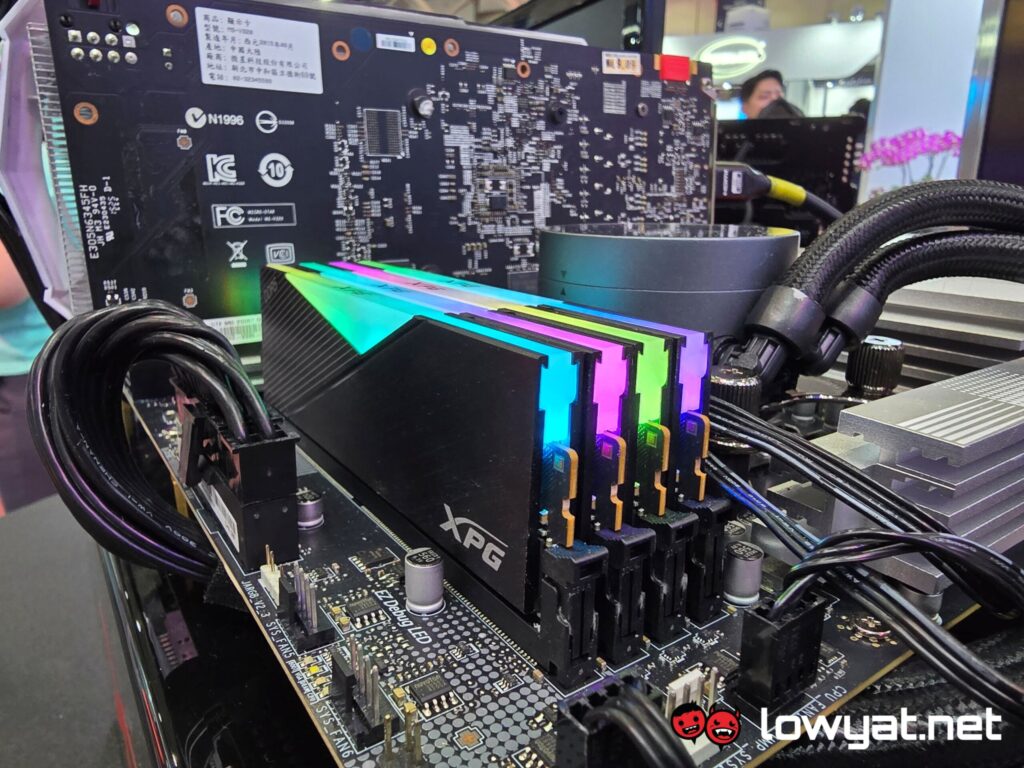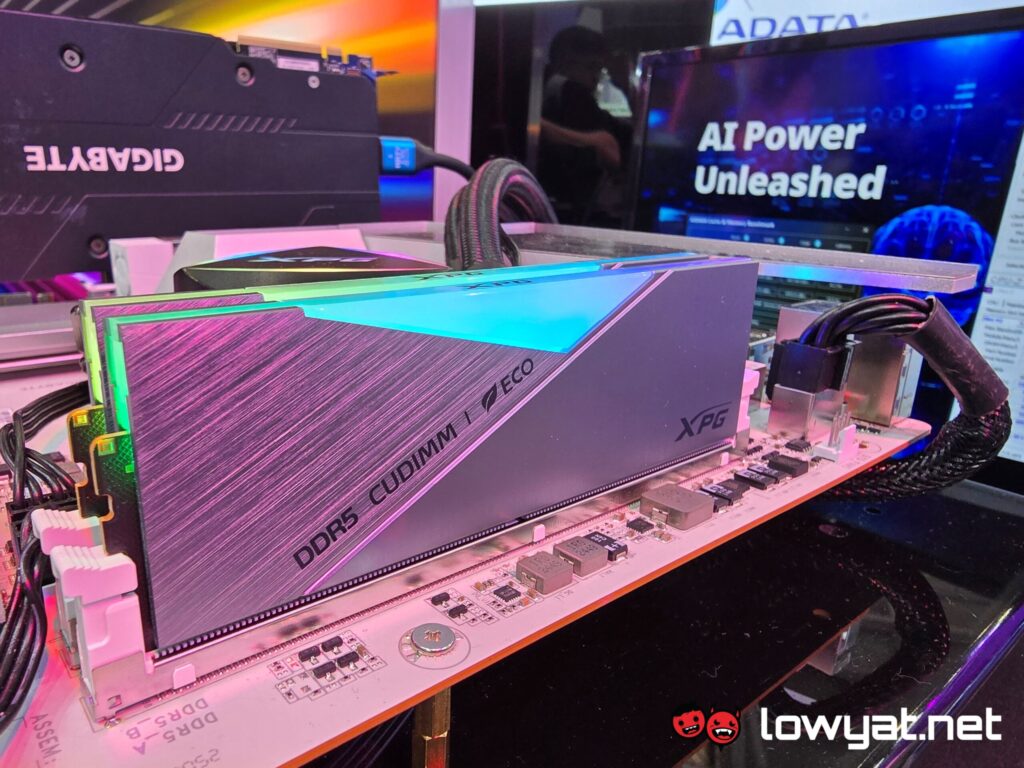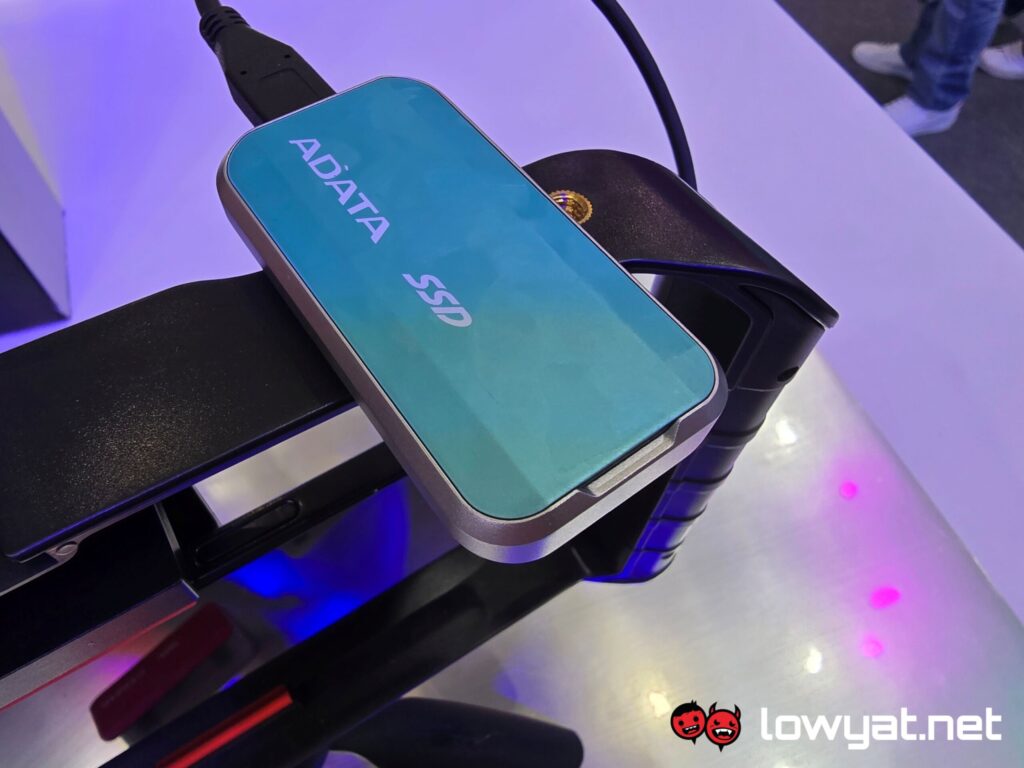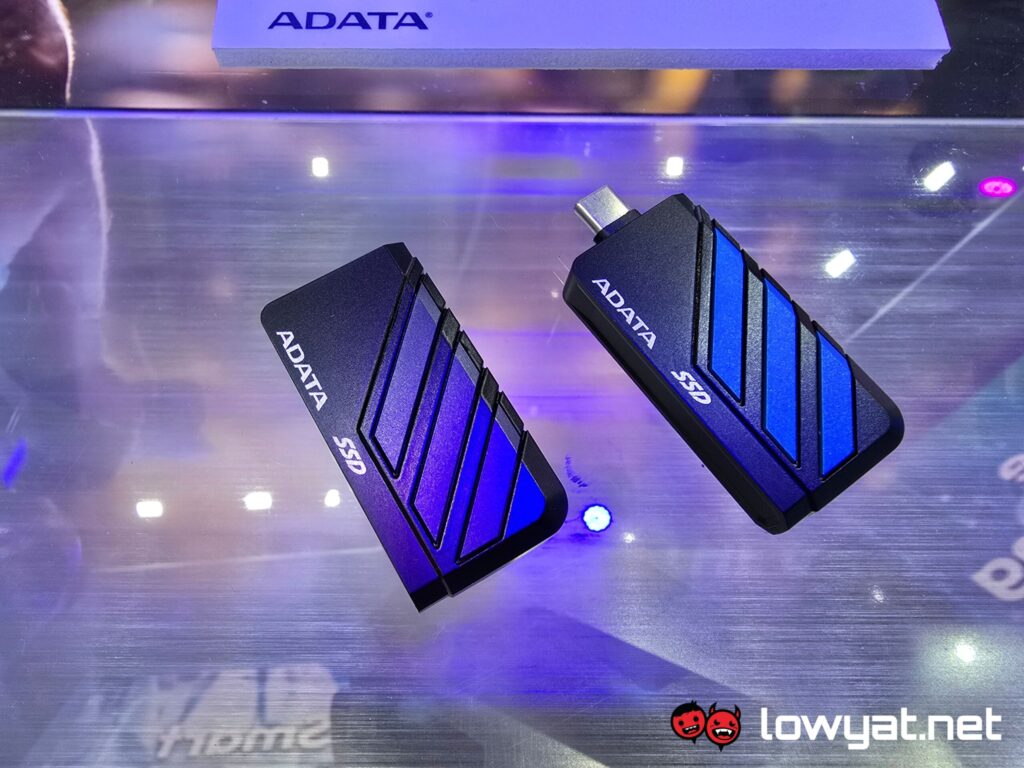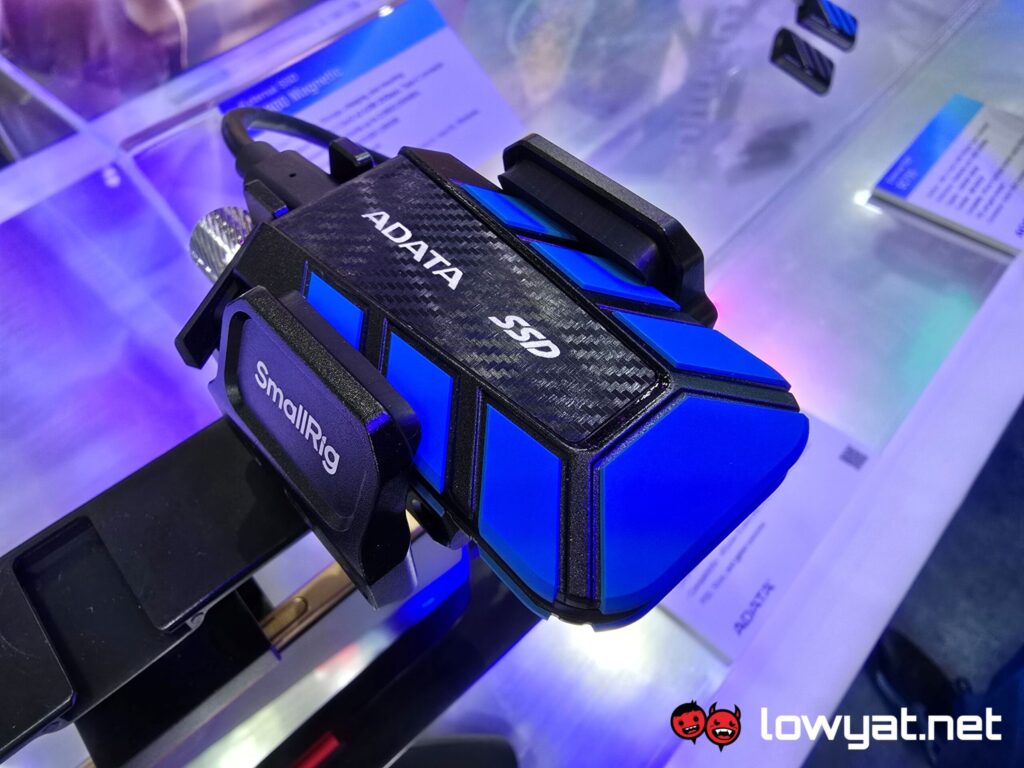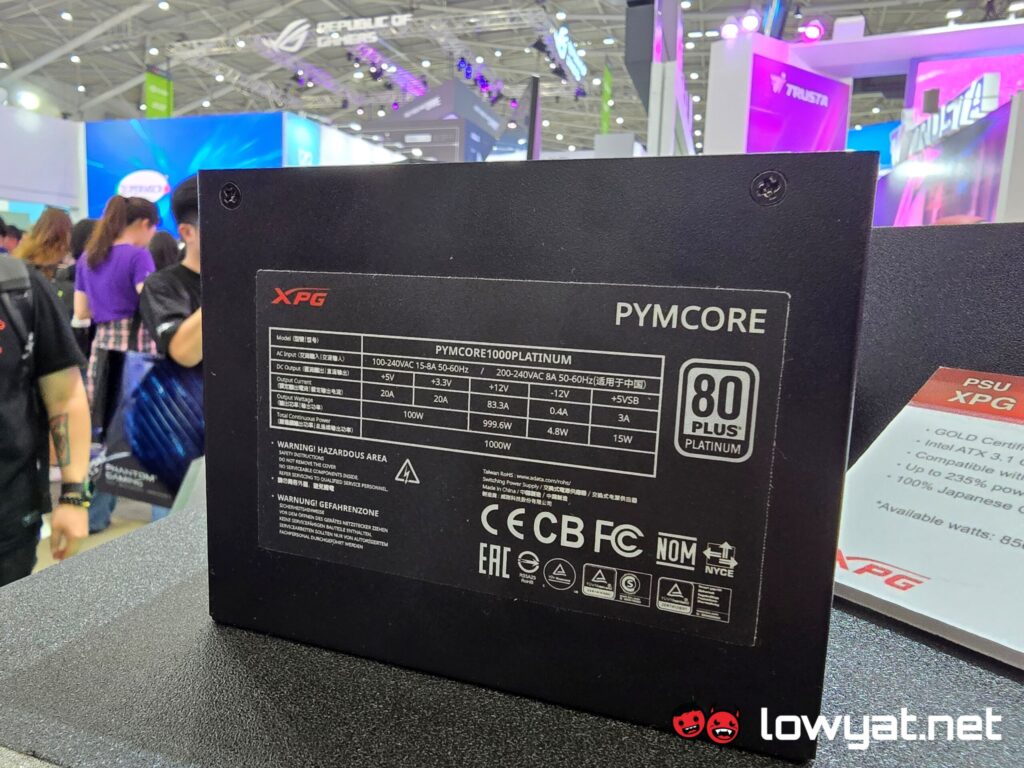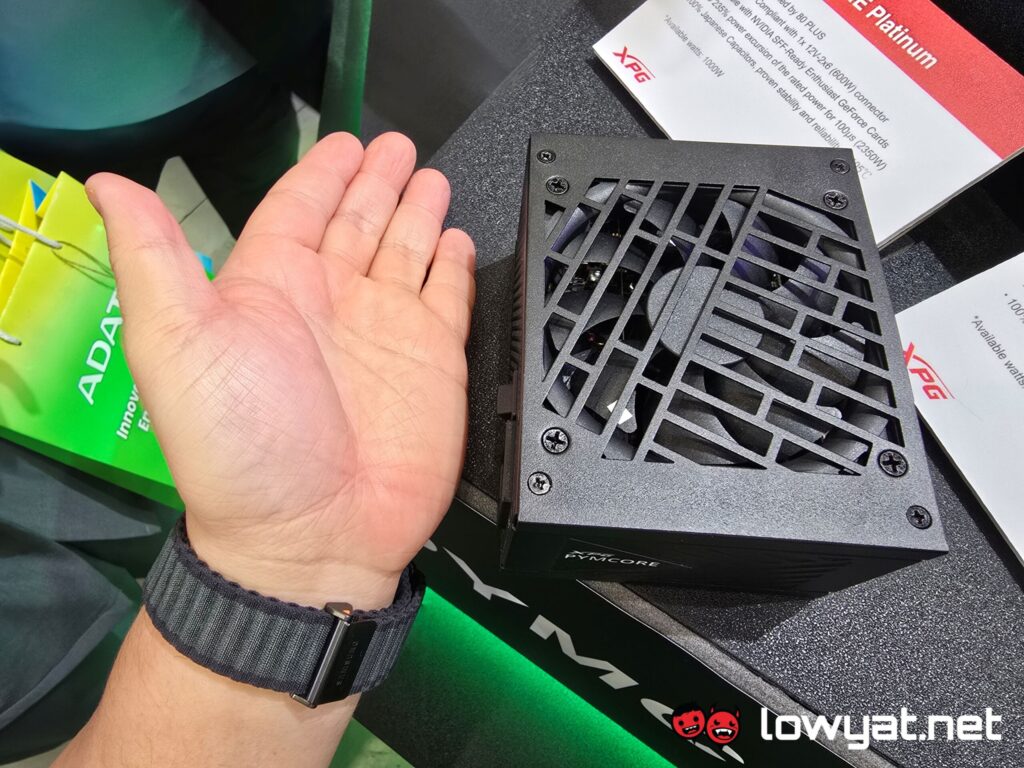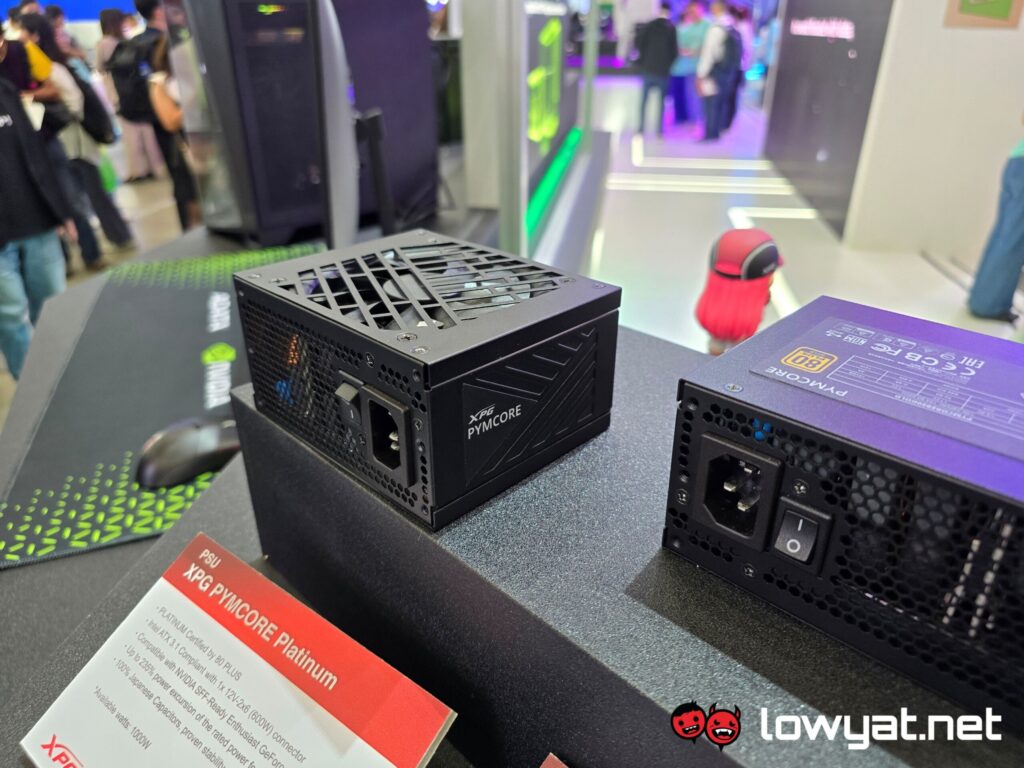While this comes a little late, we actually managed to visit Adata’s booth during Computex 2025. The brand needs no introduction among PC gamers in Malaysia, primarily due to its RAM kits and storage products, but there are obviously other products that it is known for around the world.
Like every other brand wanting to hop on to the bandwagon, Adata was eager to show off its own self-branded and self-made gaming chair. First impressions are that the chair had a wide seat base that felt comfortable enough for my posterior but more importantly, it has a pillow at the headrest, which is a plus point for me.
The unfortunate news for this, however, is that Adata did specify if or even when it plans on sending its gaming chair over to Malaysia.
Moving on, the company was eager to introduce its Project Infinity CUDIMM DDR5 RAM on the floor. For the uninitiated, CUDIMM is basically non-binary memory kits, typically offered in capacity of 24GB and 48GB capacities on a single stick, offering more than the traditional geometric amount of memory in a system (e.g. 16GB, 32GB, 64GB). Moreover, Project Infinity offers frequencies of up to 8,800MT/s but that those speeds, you’d be running at slightly looser CL38 timings. That said, the smaller capacity memory kits do offer tighter timings at CL30.
Still on the subject of memory, Adata did also show off its Lancer CUDIMM DDR5 RAM kits running at speeds well beyond 12,000MT/s. It was a dual channel kit of 24GB but as expected, the CL timings were high at 68-127-127.
Storage-wise, the brand also showed off its Mars SSD storage options, and that included the water-cooled Storm SKU that, sadly, won’t be hitting the Malaysian market anytime soon. The reason Adata gave us was because of market demand – the standard Blade model would be more popular by virtue of it being more accessible, as well as an easier option for gamers seeking an easy storage upgrade, both for their laptops and desktop PCs.
We also got a chance to see the XPG Pymcore small form factor (SFF) power supply. What made this interesting was the fact that it was a 1000W PSU that was no bigger than my entire hand. This was genuinely fascinating to me and while I’ve yet to see it in action to judge its stability, it does open up the door to SFF aficionados that want to stuff their system with beefier RTX 5080 or 5090 FE GPUs, and not have to worry about insufficient power for their entire systems.

